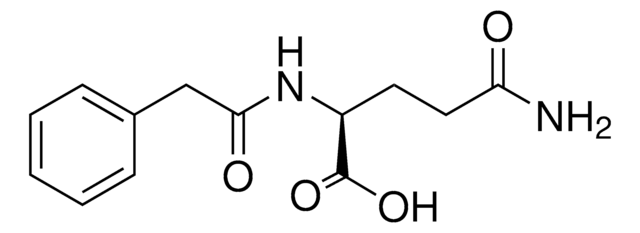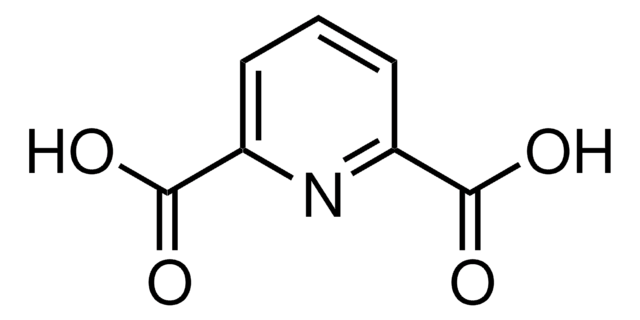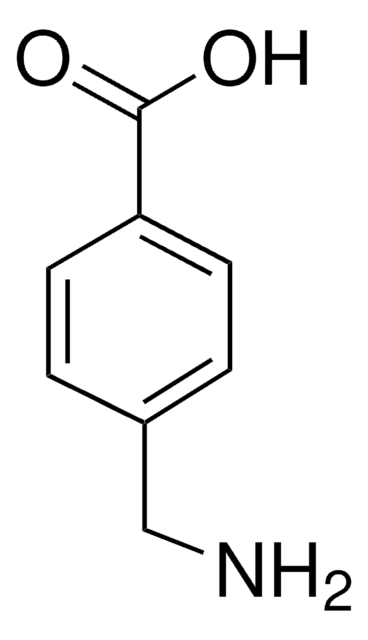Kluczowe dokumenty
96408
N-(2-Phenylacetyl)glycine
analytical standard
Synonim(y):
2-(2-Phenylacetamido)acetic acid, 2-Phenylacetyl glycine, NSC 408424, NSC 92778, Phenaceturic acid, Phenacetylglycine
About This Item
Polecane produkty
klasa czystości
analytical standard
Poziom jakości
Próba
≥98.0% (HPLC)
okres trwałości
limited shelf life, expiry date on the label
Zastosowanie
clinical testing
Format
neat
temp. przechowywania
2-8°C
InChI
1S/C10H11NO3/c12-9(11-7-10(13)14)6-8-4-2-1-3-5-8/h1-5H,6-7H2,(H,11,12)(H,13,14)
Klucz InChI
UTYVDVLMYQPLQB-UHFFFAOYSA-N
Powiązane kategorie
Działania biochem./fizjol.
Polecane produkty
Hasło ostrzegawcze
Warning
Zwroty wskazujące rodzaj zagrożenia
Zwroty wskazujące środki ostrożności
Klasyfikacja zagrożeń
Acute Tox. 4 Oral
Kod klasy składowania
11 - Combustible Solids
Klasa zagrożenia wodnego (WGK)
WGK 3
Temperatura zapłonu (°F)
Not applicable
Temperatura zapłonu (°C)
Not applicable
Wybierz jedną z najnowszych wersji:
Masz już ten produkt?
Dokumenty związane z niedawno zakupionymi produktami zostały zamieszczone w Bibliotece dokumentów.
Nasz zespół naukowców ma doświadczenie we wszystkich obszarach badań, w tym w naukach przyrodniczych, materiałoznawstwie, syntezie chemicznej, chromatografii, analityce i wielu innych dziedzinach.
Skontaktuj się z zespołem ds. pomocy technicznej








